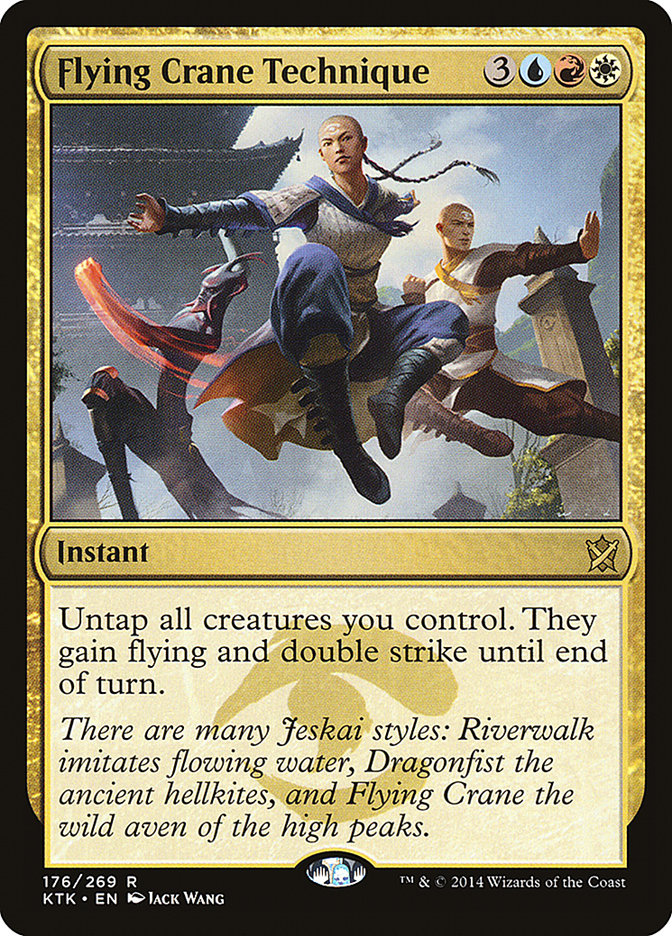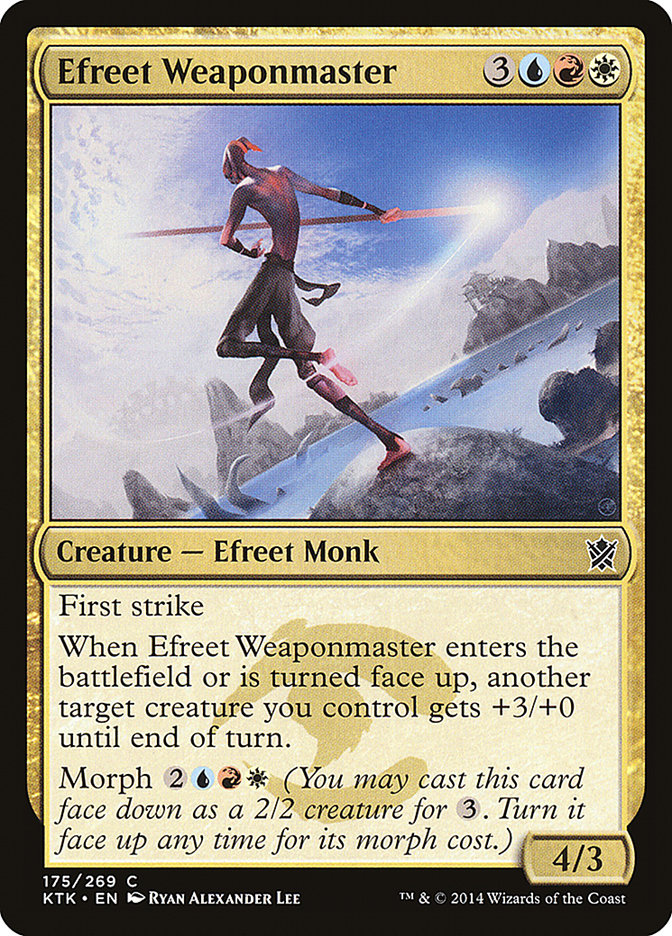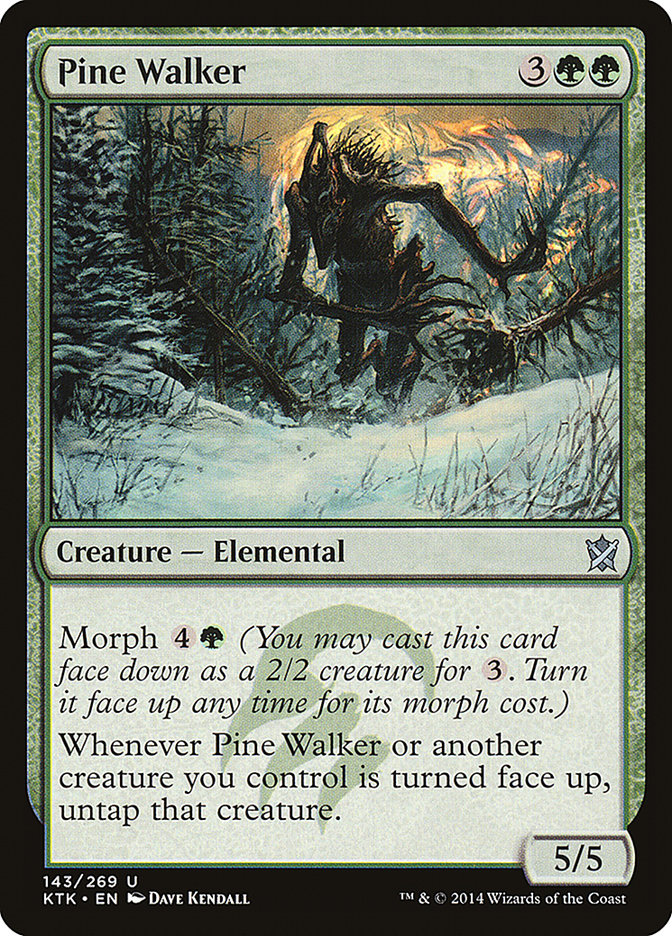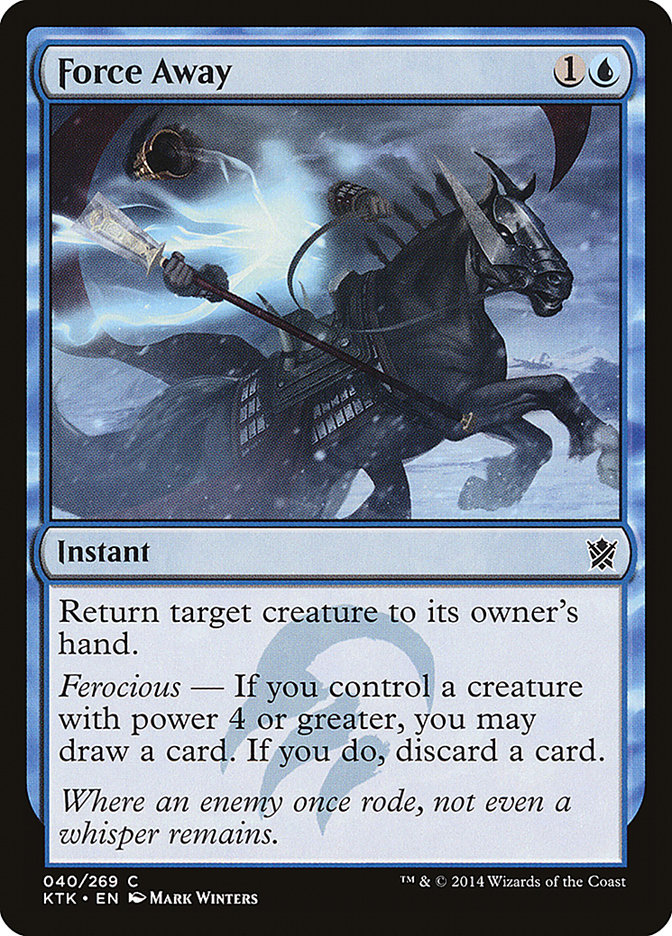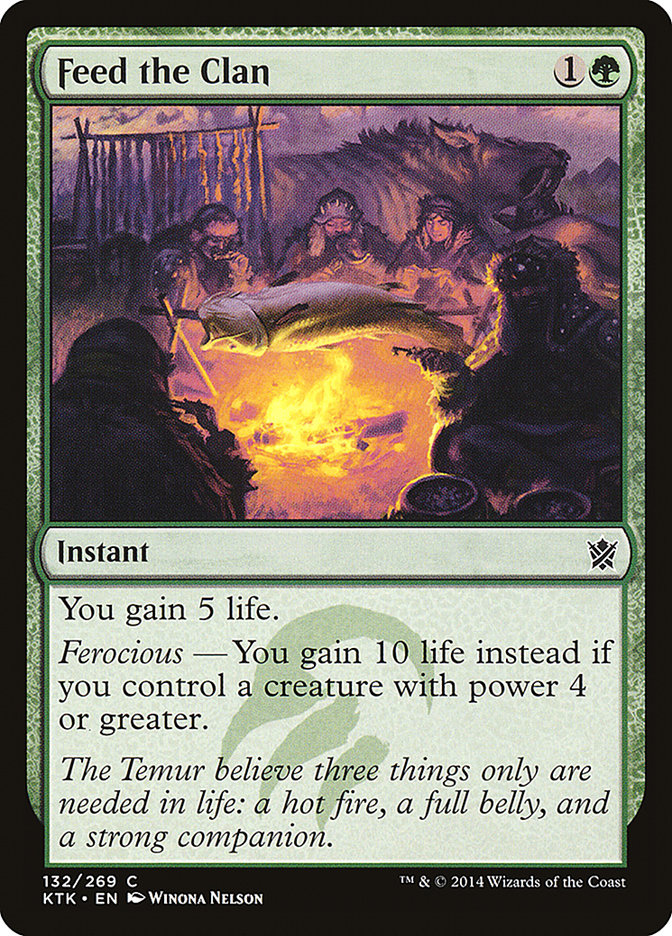This past weekend, like many of you, I had my first chance to play with the new cards from Khans of Tarkir. I spent my Saturday spellslinging at San Diego
Games and Comics in Mira Mesa, California, where I not only participated in the main event, but I also took on all comers who wanted to challenge me for a
chance to win a booster pack. At most events where I’ve been a spellslinger over the years, about half of the people I play want to use their sealed deck,
and about half want to play some form of Constructed. While I had a Standard deck with me to battle, I only actually took it out of its deck box once,
which to me was a sign that people really seemed to like the Limited format.
I’m certainly one of those people. I had a blast at the event. Khans Limited seems like a great format, and I’m really looking forward to exploring it
more. So far, my only experience has been at the Prerelease, but the early days are when you learn the most. I wanted to take the opportunity to share with
you what I learned and look at the cards that impressed me the most, as well as the ones that were a disappointment.
As I mentioned last week, I decided to go with
Temur as my clan. While most people I talked to seemed to feel like Abzan was the strongest option, I certainly wasn’t disappointed by my choice.
When I actually got my cards, I ended up straying a little bit from my advice from last week. I got a little greedy, and put together a four color deck
rather than sticking to my clan. Granted, I had both major incentive to do so and the tools I needed to pull it off, so perhaps it’s wrong to call it
greed. This is a format that certainly presents us with a lot of options, and there’s only one way to figure out which of them are realistic. And there’s
no better time for experimentation than the Prerelease!
Here’s what I ended up putting together:
Creatures (14)
- 1 Dragon-Style Twins
- 1 Heir of the Wilds
- 2 Efreet Weaponmaster
- 1 Bear's Companion
- 1 Pine Walker
- 2 Woolly Loxodon
- 1 Alpine Grizzly
- 1 Summit Prowler
- 1 Snowhorn Rider
- 1 Glacial Stalker
- 1 Longshot Squad
- 1 Riverwheel Aerialists
Lands (18)
Spells (8)

I originally built the deck as just straight Temur, playing a pair of Ainok Trackers and a copy of Become Immense in the place of the Jeskai cards, but
Flying Crane Technique seemed too good to pass up. With the eight nonbasic lands I had at my disposal, along with the potential basic land search from
Trail of Mystery, I felt like I had the tools to easily support a minor splash. The white cards just seemed substantially more powerful than my other
options. I only had five sources of white mana in my deck – six if you counted Trail of Mystery – but only one of my three cards actually needed white mana
to cast. If I didn’t draw my splash, my Efreet Weaponmasters could just play the entire game as morphs, which isn’t optimal but is a lot better than
sitting as dead cards in hand.
In the end, I was thrilled with the splash. Flying Crane Technique was the single best card in my deck, and it wasn’t particularly close. I won literally
every game I cast it, some of which would not have been winnable with any other card. In one game, I was at one life and my opponent was at twenty, and I
had three creatures in play to his six. I had exactly ten power on the board, and all of a sudden he was dead. More of my games ended in my creatures going
WUR-Tang style all over my opponents than otherwise. Flying Crane Technique is an absolute bomb, and you’d be well served to pick and play it when you get
the opportunity. It’s harder to cast than Overrun generally was because of the color commitments, but it has even more game ending power than that classic
Limited bomb.
I was also quite happy to have the Efreet Weaponmaster in my deck. Of all the clan color common morphs, I think he may be the best of the lot. Not only is
it a 4/3 First Strike body on his own, which means that it’s going to eat up almost anything that blocks him, but the +3/0 trigger on flipping it face up
is very good at helping your other creatures win in combat. Because there aren’t any low cost morphs that can easily win combat against other small
creatures, your opponents are often going to be tempted to block multiple face down creatures in the same attack so they can force you to use your mana on
one of them and they might get a free kill on another. With Efreet Weaponmaster though, you can send your morphs in with impunity, because there are few
ways your opponents can block that will actually end up going well for them unless they have a far superior board position.
Speaking of potent morphs, I was similarly impressed by Pine Walker. The ability to not only become a 5/5 creature but also to untap for five mana can make
for some great opportunities to catch your opponent off guard. Perhaps more importantly, the ability to just straight up cast Pine Walker as a 5/5 body for
five is a really good deal. That’s one thing that’s very important to keep in mind when you’re playing this format. You may be tempted to try to get tricky
and morph your creatures all the time to try to get your opponent – especially with a creature that has as much blowout potential as Pine Walker— but it’s
often going to be best to just play your creatures face up when you can. Don’t invest more mana than you have to just for a chance to get clever!
That was definitely something that was on the top of my mind when I was playing with Trail of Mystery. With seven morphs in my deck, Trail was quite
powerful. Both of its abilities – searching for a land when you play a morph, and giving your morphs +2/+2 when they flip face up – can provide you with a
lot of value over the course of a game. But frequently I would want to play my creatures face up even when I had Trail of Mystery in play simply because I
wanted to make efficient use of my mana when I was developing my board. There were a number of games, especially against aggressive Mardu decks, where I
just couldn’t afford to play anything more than my first morph creature face down because I just needed to defend myself quickly. I would not be surprised
if Trail turns out to be a fairly weak Draft card as a result, since Draft is always a significantly faster format than Sealed Deck, and it was already
questionable at times in Sealed.
My other rare – well, besides the Flooded Strand (CHA CHING!) – was a lot more exciting. Dragon-Style Twins was pretty fantastic. That’s not terribly
surprising, since any big double strike creature will be, but the 3/3 body with prowess was perfect for triggering my ferocious cards like Force Away and
Savage Punch and certainly packed quite the wallop itself. Savage Punch itself was especially potent with the Twins since you get to fight something to
clear the way for a 6/6 double striker attack.
Barring that though, I was actually somewhat unimpressed by Savage Punch, though it might have just been the specifics of my deck composition and the size
of my creatures. With so many morphs, my creatures would usually be about the same size as my opponent’s, so there weren’t a lot of good opportunities to
punch any of their creatures early on. Later in the game, you start having to worry about tricks that could potentially make you lose the fight, so it’s
much harder to use than it seems like it ought to be.
Force Away, on the other hand, was great. That’s probably not all that surprising since bounce spells are usually pretty good, but this one is especially
potent for a few reasons. One is the ferocious trigger. It may seem minor, but getting to draw and discard can either help increase your card quality by
looting away lands later in the game, or dig you to the land or spells you do need early on. Second is just the nature of the format, particularly with
morph. This is a format in which there are effectively a lot more tricks, because morph creatures flip during combat regularly. When players are investing
a lot of mana during the combat phase, bounce spells are much more effective, because you can potentially even time walk them if they try to flip something
up mid-combat on their own turn. The double mana investment that morph creatures require just make bounce effects an even bigger tempo swing than usual.
On the subject of tempo swings, one of the surprise stars of my deck was Winterflame. I debated playing Swift Kick in my deck during construction, but I
ultimately ended up leaving them on the bench because it felt like I needed something to help my morph heavy deck potentially play from behind. Winterflame
gave me exactly that. As a two damage spell, it’s great at picking off early morph creatures, and the ability to tap things down is more powerful in this
format than it would be in most. Both the outlast and raid mechanics need an untapped creature during a player’s main phase in order to use them, and I
found quite a few instances over the prerelease where I was able to shut down my opponents’ access to one or both by casting Winterflame during their
upkeep to kill one creature and tap another.
The worst card in my deck, by a fair margin, was Riverwheel Aerialists. It looks good at first glance as a big flying creature with upside, which is why I
included it to begin with. The Aerialists were never particularly good in any of the games that I played, and the single most common factor in games that I
lost seemed to be that I drew them. With so many morphs that you can play face-down early as a 2/2 or face up as a big creature late, you have to be
getting a really good deal for your non-morph creatures in order to give up that flexibility. Aerialists is just not a good enough deal to justify playing
it over a decent morph, I think, unless you really need the evasion.
That said, evasion does seem like a very important factor in Khans Limited. If you don’t have the tools to break through a stalled board, you’re going to
have a really hard time winning past legions of steadily growing outlast creatures, which can outpace even giant morphs with how big they can get. I had it
easy with Flying Crane Technique in my deck, but I can definitely see ways to break through being very important. If I hadn’t been so fortunate to have the
flying Overrun, I probably would have included the Barrage of Boulders that spent the tournament in my sideboard.
I did a reasonable amount of sideboarding throughout the tournament, but far and away my most effective board cards were Windstorm and Feed the Clan. They
tended to come in against vastly different decks, of course. Windstorm is fairly obvious, but it was an important tool to give me outs against powerful
fliers like Sage of the Inward Eye and High Sentinels of Arashin, both of which have the ability to get out of hand really quickly – especially if you have
both of them, like my opponent to whom I took my only loss.
Feed the Clan was my answer to Mardu rush decks, and it was awesome. I used it on multiple occasions to give me just enough time to take over with my
larger creatures. Ten is a whole lot of life, especially against an opponent who is often throwing away resources in order to get damage in and trigger
raid, and even the failure case of five life when you can’t trigger ferocious isn’t a bad deal for a two mana instant.
All told, I feel like I learned a lot at the prerelease, and I certainly had a great time doing it. This is a format that feels like there’s a whole lot
more to explore though, and I’m looking forward to diving right into Draft soon. As far as my thoughts on the impact of Khans of Tarkir in Standard, I’ll
be addressing those more in the coming weeks, but here’s a good starting point.
What do you think? What have been the most impressive cards that you’ve had a chance to play with in Khans Limited, and what cards have disappointed you?


